rev Aug 29-30-31/ Sept 1, 2021.
It is also of interest that sitting under this painting, where there is no father, only a mother, on the right, he says “get me the NYC office”
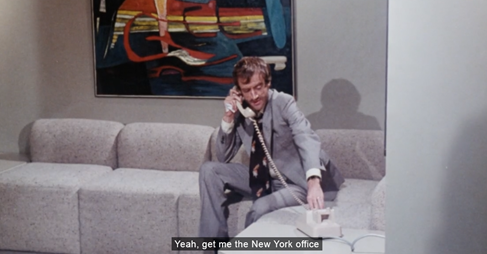
and we see a This is New York shot, and it is the newly built World Trade Center, the father figure
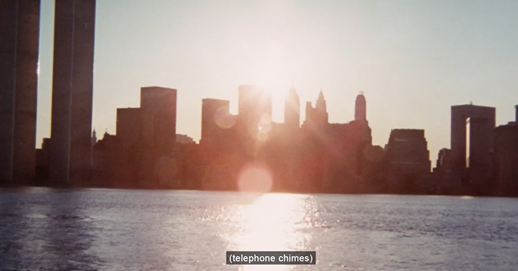
when back in the office, they discuss the said maximum zodiacal potential graph, a father figure painting is behind, in the same series
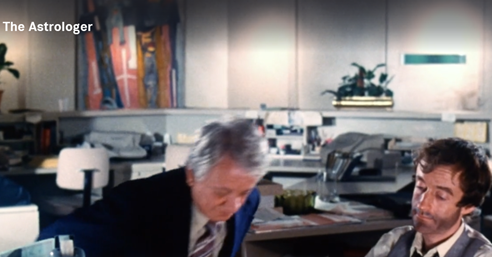
and there is the form, in its pure formal state
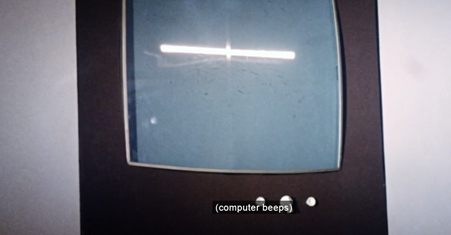
though it may be the office fluorescent light reflected over a form that looks like a shallow curve swelling to a center, and he declares that based on reading of the star chart, this particular form of the MZP has only shown up twice in history, which is a twinning thing, no?
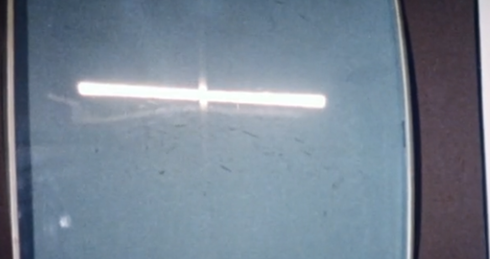
it is at this point that they reveal that Kate is the second once, that is, she is a prodigy, with a profile like that
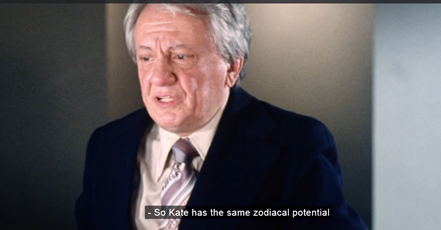
and when this is announced, another picture shows up behind
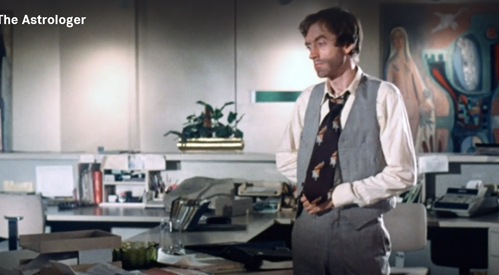
with a clear presence, on the left, of the Virgin Mary, but then a form in the sky, linked to the cover of Mann’s Doctor Faustus, and then an amalgam form on the right indicating that we are still trying to work that out
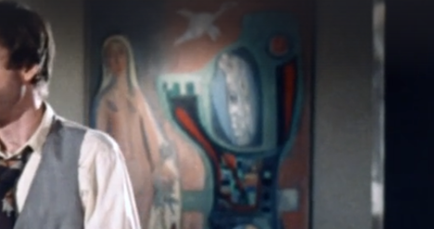
this is a freeze frame picture indicating his worries increasing, now that he knows what he knows, it is true, Kate IS the second Virgin Mary, so if we compare this painting to the previous, the sunny presence has now personified more clearly as the Virgin Mary herself, then the spirit of Kate has emit like a bird to then pull in and up on the uncertainty of who the child is, and the child comes into view as a white form at the top of the cenote of crisis, while the Karjerste form has reached out pincers, indicating that it is getting closer, and more dangerous, like this
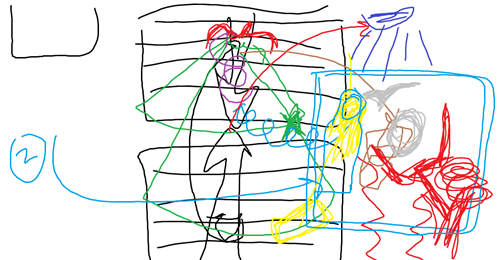
so, we find out why Alexei has sworn off fucking Kate, if he thinks she is the reincarnation of an MMP that last appeared in the case of an immaculate virgin who gave birth miraculously to a god, then he does not want to interfere with her virgin power. He thinks that she is still pure, and must stay that way, and now by her presence, the danger of what he fears, projected into the picture, is allayed.
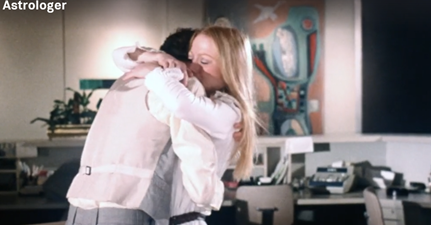
then of course, Trembley knows that immaculate woman has already given birth to her magic child, the second coming savior, so he goes checks out if it is possible to find this child, by way of, of course, the catholic church, always depicted in horror movies as a prototype place where the veron icon, or true image of things, hides
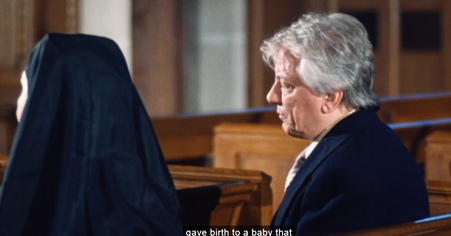
What all this means is that even if she gave birth to a child in an immaculate state, that is, without tearing open her hymen, it means that the event that signaled the second coming, that is, the birth of the child, has already taken place, and so even if Kate is the one, she already had that child and it is out there so what state her hymen happens to be at the moment, is irrelevant. Alexei is happy about this and immediately runs home to fuck Kate, and they do
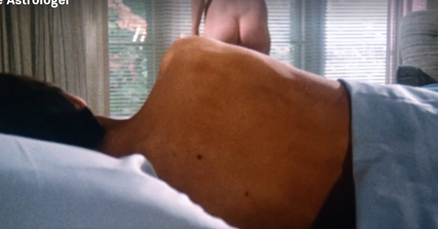
and, now, a surprise. Kate has been bottled up for the whole movie. A great deal of mystery surrounds her, Alexei’s suspicions almost ruins their marriage, as he will not consummate, she kinds of goes quietly crazy. But, for all that, though we saw at the beginning that she had very little trouble being coaxed to take her clothes off, meaning that she is an earthy girl, she has been bottled up. Now, to symbolize the break in the suspense, we get a burst of all-over nudity that is extremely rare in movies as it does not involve the marshalling of the body as a series of objects to participate in the erotic objectifying dance of movie sex, but she is just there, discovered, and entirely free and easy about being nude, happy, almost as if this is her natural state. This too is a 70s thing
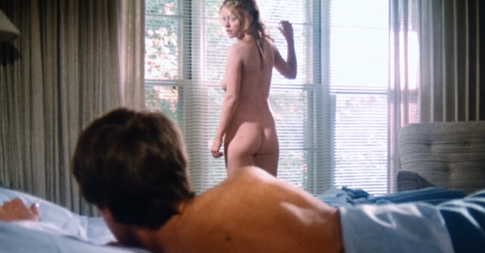
and without a blush, but only joy, she has absolutely no problem turning entirely frontal to the camera, then, she surprises again by walking toward the camera with all her parts out and swinging, happily returning to bed, this then moves her toward us; and they talk
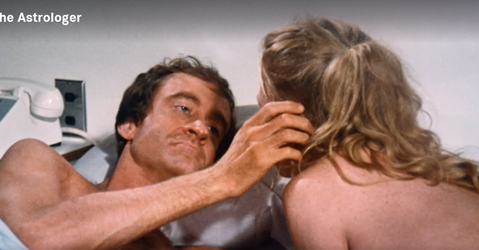
what her full frontal nudity also means, of course, is that she is coming clean with him, telling him everything, standing nakt before him. In fact, as the conversation progresses, it is a sort of playacting out of effacement, and her nudity therefore, kind of looked forward to for the whole movie, plays out as a figure of effacement too. Firstly, then, she explains that, yes she had the baby when she was sixteen. According to common parlance, that meant that she lost her virginity, because what else could it mean, then she tells him why she gave her up, she would not have been good at it
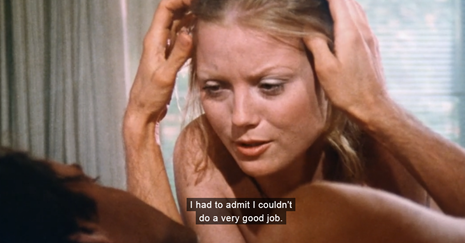
at this point, having made that admission, and erased that history from her, she makes a curious move. as she describes the events that wiped her connection with the child away, she was put under during the birth, and did not experience it, by the time she came to it was gone, she sneaks back under the sheet, running for cover, but in doing so, exposes herself to the camera completely

why? In standard trope, in horror, sight of crotch in 70s movies means, that person is going to die, check it out if you do not believe me, see crotch, that woman is dead. One imagines the trope develops as an inverted negation of what the female Bermuda triangle is known for, and what remains even today a miraculously odd thing, giving birth, so if a birthing female is exposed, that represents extreme vulnerability, and, situated there, polaritywise, death, so she exposes her crotch here, quickly, something you likely would not even have seen at a theater, but there she is, fully shown
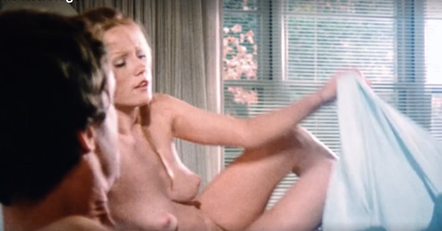
so the question is, why is she exonerated? why is she spared the ruthless logic of the trope? The answer is coming. She has stripped bare a few times already here, she has told him, yes, there was a child, yes, she had it, in both cases, however, it was almost unreal. Now, there is one more thing. as she situates, she quickly fidgets to get back up. She explains too why she chose to seek the cover of nuns, the climate and the place, Virginia, it was not conducive to taking care of unwed mothers, so she went into the care of the church, talking about it as if an effacement as well. and then she reveals the whole thing, she lost her virginity when she was sixteen, that sex act resulted in a pregnancy, she had a baby, as she tells this, she moves about. Then uncovers herself all over again, recounting of her recovery, and that the baby is lost, all that she suffered from that mistake, then she jumps up to go back to the window, slips on a robe, all of this in front of him, and us, for us to then consider her in all her innocent beauty, mid 70s, half way between Sissy Spacek and Cheyrl Tiegs style
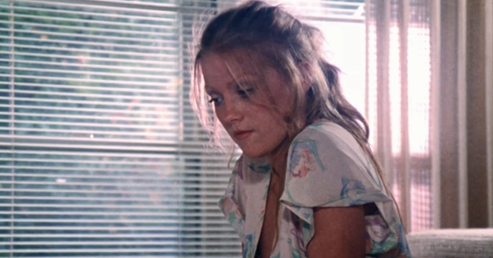
clean and sweet and sexy, not porno sexy (though today porno does work with these features, become a trope, but back then, no)
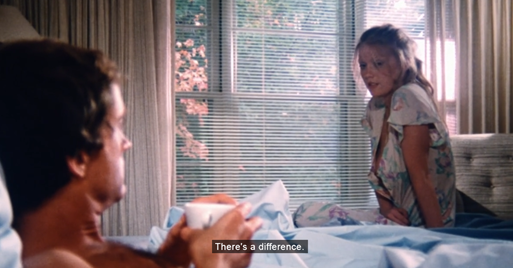
she gets up to put a robe on. Why? because she needs, now, a bit of cover, this part is going to be hard to reveal. This little gesture reminds me of when Fate Dunaway is in bed with Nicholson in Chinatown and getting up, nude, when he mentions that he knows and met her father, she immediately pulls her hands and crosses them over her breasts, a primal gesture of protection, this is what it means here too. She sort of says that she went to the sisters because they had more tact. This also implies that they were more likely to believe what was happening, but she does not say this. It is interesting, subtle. But then she lays it on him. He told her that there was some crazy theory that they had to abide to in their marriage, no sex, until he figured it out. He did not tell her what it was, she waited, she did her part, she is now calling in the debt, and then she comes back to bed, and, telling the whole thing, and the WHOLE thing
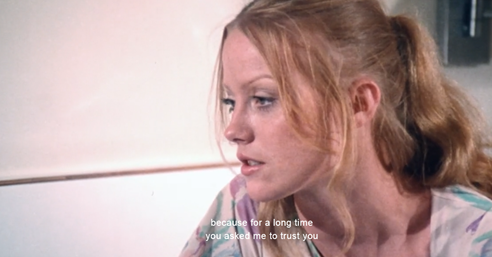
she asks him to now believe something very difficult to believe,

and that is that, the bombshell, she did not actually have sex with the boy, at sixteen, there was no sex involved
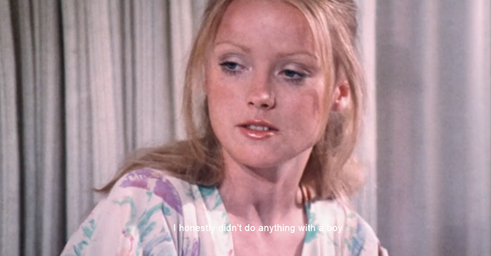
everybody of course tortured her but she did not in the end know who the father was, and, in fact, what she is really saying is, she did not know if there WAS a father. I think she is even saying that her hymen remained intact, her virginity was NOT violated or taken from her, the child was born, somehow, without compromising her virginity, and this, this miracle she believes, clearly, part of her charm and mystique then, but also a certain airy superpower, and he is asking him to believe it too, so things will be even between them
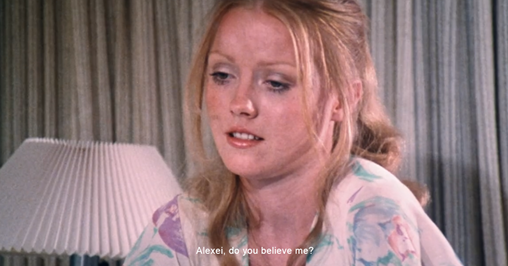
and THAT is why she can show her crotch in this confession, and she will not die as a result of the trope. Her crotch is not the birthing place (I am not talking about woman who are or are not mothers, just general cultural maternal symbolism), she is exempt, she gets a pass, she did not bring life, technically, so being stripped bare down to the bare fact of that will not result in death. Kind of amazing, if true, entirely unconscious I would think, he is delighted, of course, nothing like a superpower wife, cue the impressionism. They hug, over the truth, her truth, his truth.
then she has a few more things to say. Mentioning a problem that Rahv brought up earlier, it seemed like a dream
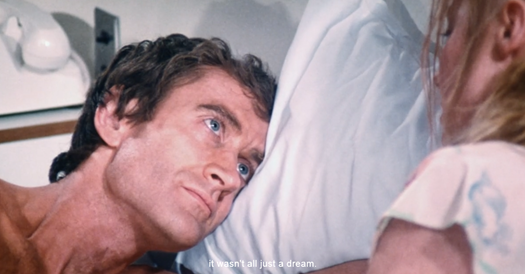
this means that, if you look under the hood of the movie, scientific direct transmission of images into the brain, which still at this point only seem to the brain like a dream, the prototype experience of that zapping would seem to allow of the same problem in conceptualizing all body function. So, the primal example of such zapping would be the ray of light that penetrated Mary’s womb in Annunciation images, and she is saying, or reading back, the fact that it all seemed unreal, that is, as the voice heard inside Mary’s head, to which she answers, the whole exchange rendered in miracle images in the Renaissance by backwards writing, that is, effacement, a representation of invisibility. and then too the trembling unreality of it all, captured in Rosseti’s Ecce Ancilla
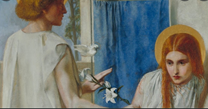
then she wraps it up that something about the whole thing, the pregnancy, the adoption, the loss of contact with her, the whole thing had this unreal self-erasing quality that left no mark on her, actually
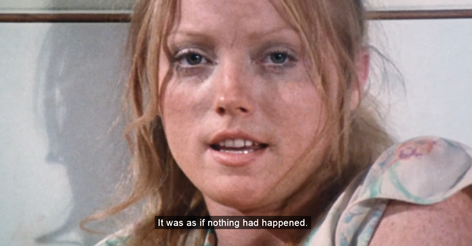
and she goes to blue
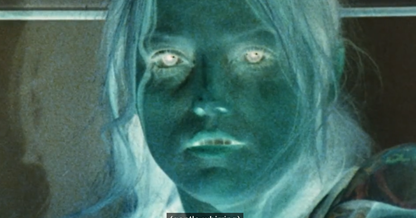
this whole thing, then, this whole summary scene, which I think is, vis a vis giving nudity an almost spiritual relational purpose throughout, step by step, it is almost like the reverse of an annunciation scene, in which she asks him to believe that, in fact, he is right, she is the second virgin mother, her child IS the new messiah, if you follow the logic, and that’s that, though it is curious that at the very end of it the movie itself blinks at her, and wonders, cut.
But, obviously, a sci fi movie that makes use of the virgin birth as the primary tool of the science, I’m in.
It is curious, the short careers of scream queens, maybe they quit so soon because of sexual offense, but in this case it is almost as if Tidwell had to erase the memory of her Playboy layout with a counter image of how female bodies really live and ought to be in the world, free of the corny clichés of photography objectification, which still, by the way, live on.
So, interesting. I can in this scene detect no objectification of the female body. Like Romero in some of his movies, the scene evinces an attitude of easy acceptance of the everyday nudity of living in the company of a beautiful woman. Though there is a bit of admiring wonder at the charisma and healthy sex appeal that just radiates from her body, it is all shown in an entirely liberal-ideal way of thinking this is a way of living. It turns out it is also a symbol of her effacement as a merely bodied being, acknowledging that a miracle happened in her life, but she has chosen to think it unreal. It is a goddess stance. Indeed, it was a common remark made by women in the 70s , who had only come of age then, and did not live through the earth mother hippie 60s as grown up women, that they would have no problem going around nude everyday all the time in everything, it just felt to them, in the eden of the naturalness, to be a natural state of woman (again, Tidwell pinging on memories). (I had another friend, an Irish catholic girl I forget, who detailed why the only type of man she can love is a “fallen ange!”) As a scene it all but renders her, even in her nudity, even having had a child, on completed her prophetic duties almost as if without even experiencing it, it renders her immaculate, pure, perfectly natural, thus culminating the strange drive of the researchers after the perfect MPP, and finding it in the Virgin Mary, finding it again in a young woman, born in 1953, so 22 in 1975, who had a child in 1969, so that in her entirely liberal attitude she only confirms that, indeed, she still has it, that maximum zodiacal potential (I will also mention that when artist Titus Kaphar made use of the word potential to explain his glass sculptures at Jack Shainmen gallery in 2018, the implication was that the work was made in a state of becoming, in prototype space, before the bifurcation of the sexes into binary camps, this, I think, applies here too, as Kate, it is learned, now, does live in a prototype state, as if a saint, where everything she does is erased as lived, leaving her to die one day entirely cleansed of any of her human failings. It might be by coming in contact with this type of woman in the mid1970s that some Actaeon creatures of the day found in sex an instantly erasing magic slate quality that made it impossible to remember particular sex acts or events, it might be in this effusion, in fact, the sexual revolution began to fade away. In any case, wonderful performance.
And, then, there is the coda, she dissolves, another woman comes up
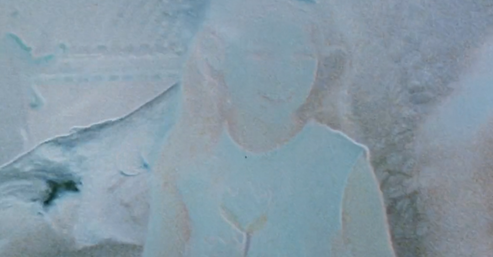
it is a seven year old girl in Central Park in NYC (the year I first came to town as an adult, four years from my moving there),
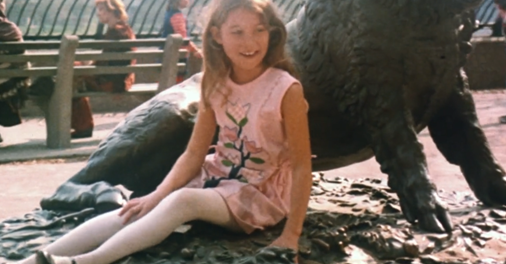
and, with a bit of sour taste in terms of the movie’s choice of villainous ethnicity and the later fate of WTC NYC, 1971-2001, it seems that Kajerste, the evil one, already has his eye on her, and will, no doubt, want to wipe out the power that her supernatural nature implies, to be continued.
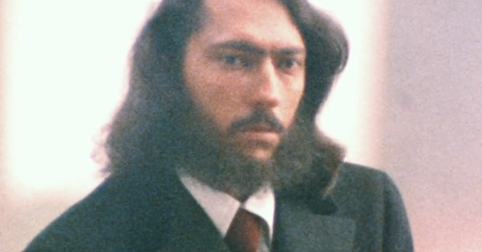
but, at this point, he does not have the symbol, there is some doubt who he is, in fact. That said, the movie ends with a sort of excess of loose ends, because the rational mind does not see associations that overlap to construe final meaning. But, then, one final encounter. Glickenhaus was reported to have said there was too much talking in the movie because he did not know how to make movies. But, inadvertently, the “waiting” in the movie, the restraint and hesitation, before some mystery, it makes of it all a “vigil” in the classic sense, a night-long prayer before battle or fateful encounter (see wiki page), and as a vigil the movie sort of dreams with all sorts of images much in the manner of a real vigil.
The last scene is a sort of vigil too, and then her last appearance, bespeaks an unclear aftermath, she has left the world something, and is now passing the torch to it, a “gentle whirring”
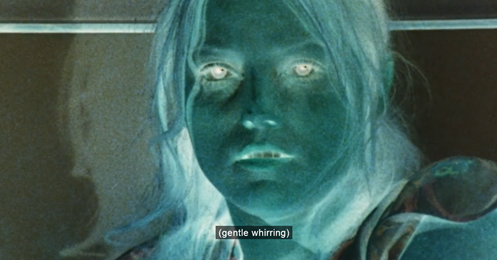
now, to complete the picture, I also believe that vigil keeping frees the half-asleep mind, to then upon assuming the Raven’s Gate position, see things. After seeing the movie, that night, I was up and down, but one time I returned to sleep, I saw in my vigilogogic state, a whole sky of brightness, a blue dot from the light reflecting off the page of a book
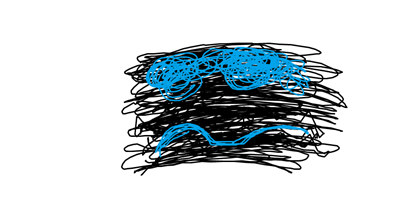
and that then, I think, sparked a particular dream formation, which I posted about for the record, this morning
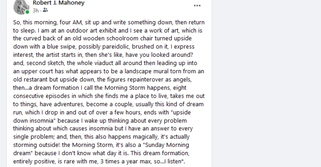
“So, this morning, four AM, sit up and write something down, then return to sleep. I am at an outdoor art exhibit and I see a work of art, which is the curved back of an old wooden schoolroom chair turned upside down with a blue swipe, possibly pareidolic, brushed on it, I express interest, the artist starts in, then she’s like, have you looked around? and, second sketch, the whole viaduct all around then leading up into an upper court has what appears to be a landscape mural torn from an old restaurant but upside down, the figures repainted over as angels, then…a dream formation I call the Morning Storm happens, eight consecutive episodes in which she finds me a place to live, takes me out to things, have adventures, become a couple, usually this kind of dream run, which I drop in and out of over a few hours, ends with “upside down insomnia” because I wake up thinking about every problem thinking about which causes insomnia but I have an answer to every single problem; and, then, this also happens magically, it’s actually storming outside! the Morning Storm, it’s also a “Sunday Morning dream” because I don’t know what day it is. This dream formation, entirely positive, is rare with me, 3 times a year max, so…I listen*.
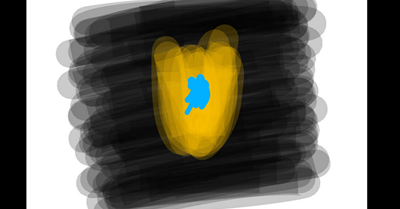
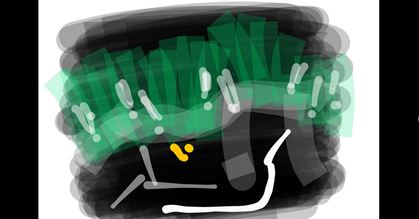
and then, it is true, a series of dreams, had because I repeatedly went to sleep, woke up, then was able to go to sleep again, and return to the same place (so a characteristic of the “Dunk Tank” phemonenon). and then I woke up to, having all but experienced lightning in my sleeping brain, lightning, and a storm
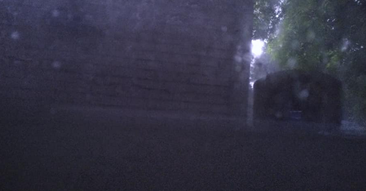
and this was uncanny, because in my morning scrolling, I was struck by the stage managing of the Afghanistan finale, we magically terminate, poof, and I knew what the image was immediately. On the front page of the New York Times, a photograph, August 31
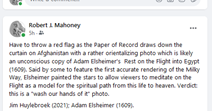
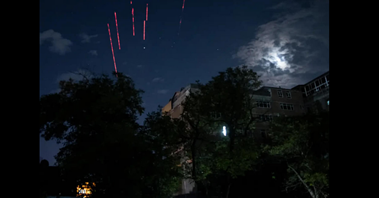
which looked uncannily close to Elsheimer’s Rest on the Flight into Egypt (1608), the first rendering of the Milky Way, it is said, in art.
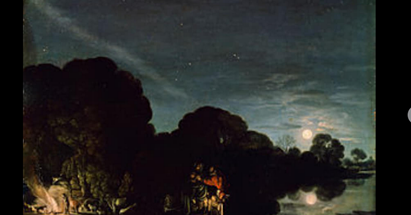
and this is what a high of “synchroetherrhoe” (everyhing in the ether flowing together all at once) feels like, in the rush of images created by the symbols being fed into a bespeaking of The Astrologer, as a sort of clearing house, which also makes me wonder if the movie as a whole was unconsciously modelled on a Morning Storm dream form, suffering from a kind of insomnia which was actually a form of sleep.